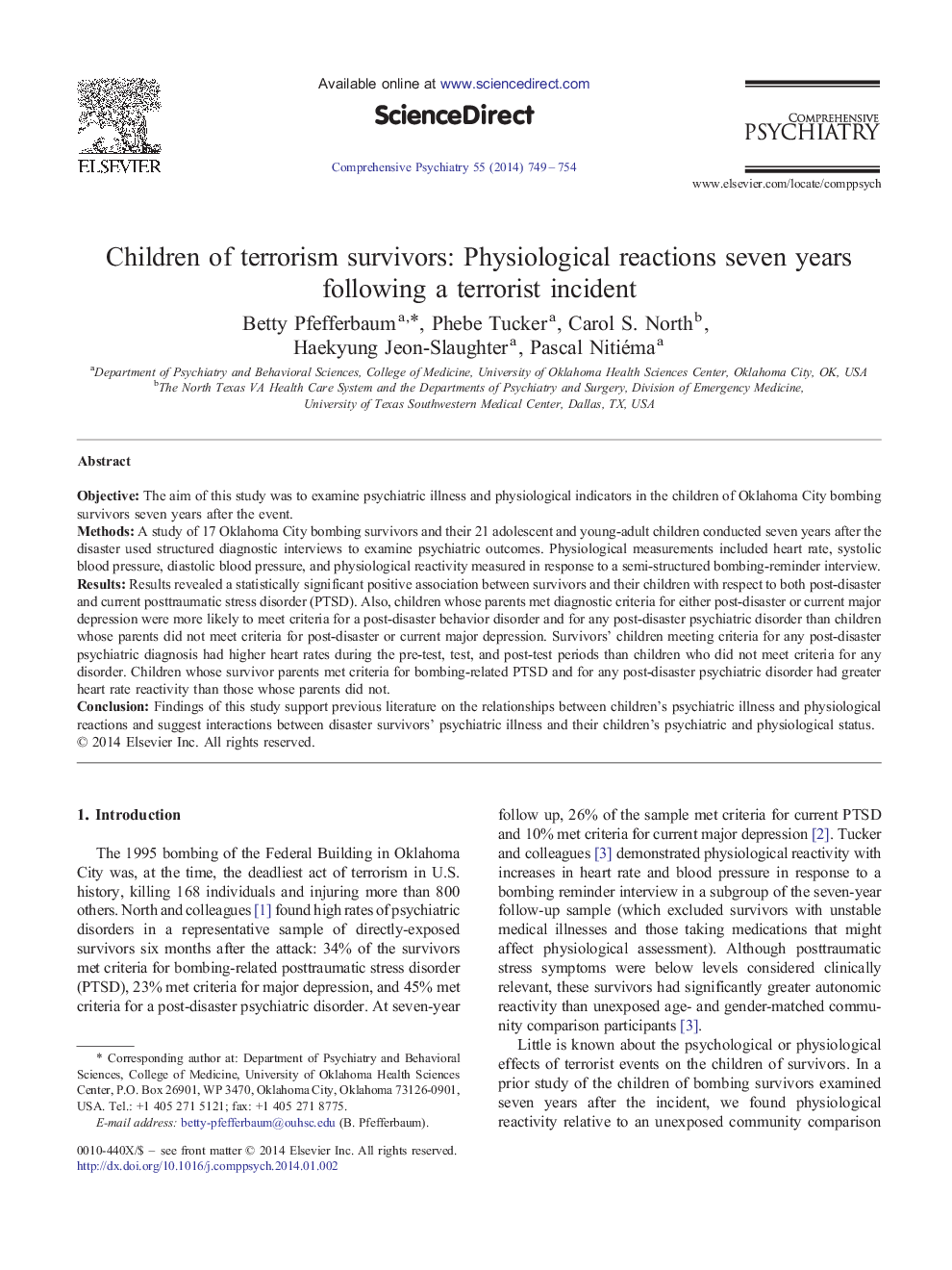| Article ID | Journal | Published Year | Pages | File Type |
|---|---|---|---|---|
| 317411 | Comprehensive Psychiatry | 2014 | 6 Pages |
ObjectiveThe aim of this study was to examine psychiatric illness and physiological indicators in the children of Oklahoma City bombing survivors seven years after the event.MethodsA study of 17 Oklahoma City bombing survivors and their 21 adolescent and young-adult children conducted seven years after the disaster used structured diagnostic interviews to examine psychiatric outcomes. Physiological measurements included heart rate, systolic blood pressure, diastolic blood pressure, and physiological reactivity measured in response to a semi-structured bombing-reminder interview.ResultsResults revealed a statistically significant positive association between survivors and their children with respect to both post-disaster and current posttraumatic stress disorder (PTSD). Also, children whose parents met diagnostic criteria for either post-disaster or current major depression were more likely to meet criteria for a post-disaster behavior disorder and for any post-disaster psychiatric disorder than children whose parents did not meet criteria for post-disaster or current major depression. Survivors' children meeting criteria for any post-disaster psychiatric diagnosis had higher heart rates during the pre-test, test, and post-test periods than children who did not meet criteria for any disorder. Children whose survivor parents met criteria for bombing-related PTSD and for any post-disaster psychiatric disorder had greater heart rate reactivity than those whose parents did not.ConclusionFindings of this study support previous literature on the relationships between children's psychiatric illness and physiological reactions and suggest interactions between disaster survivors' psychiatric illness and their children's psychiatric and physiological status.
